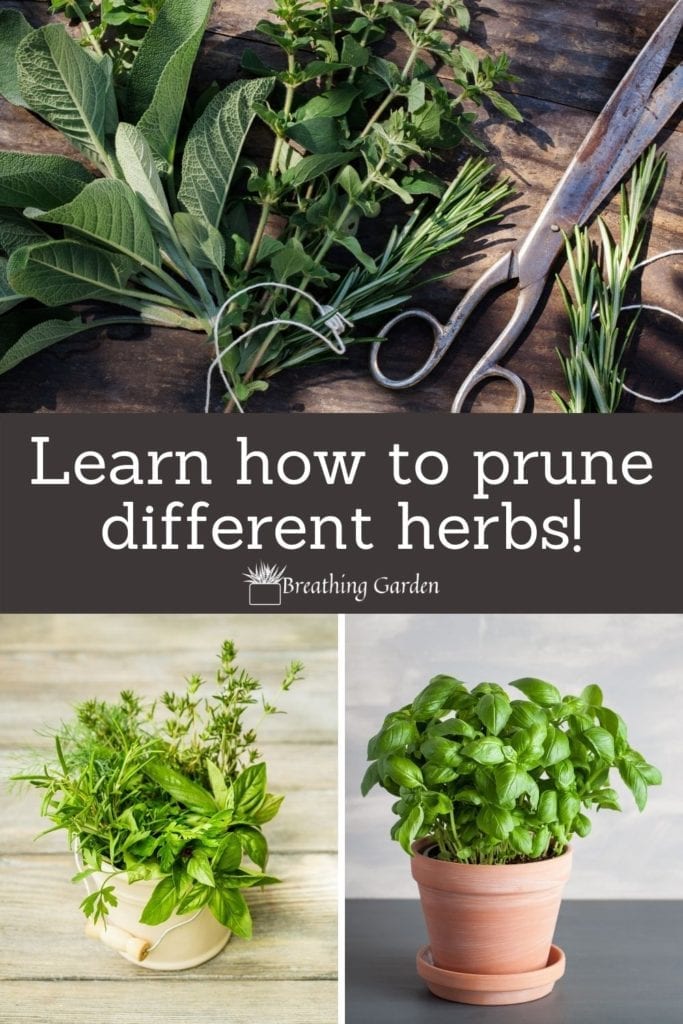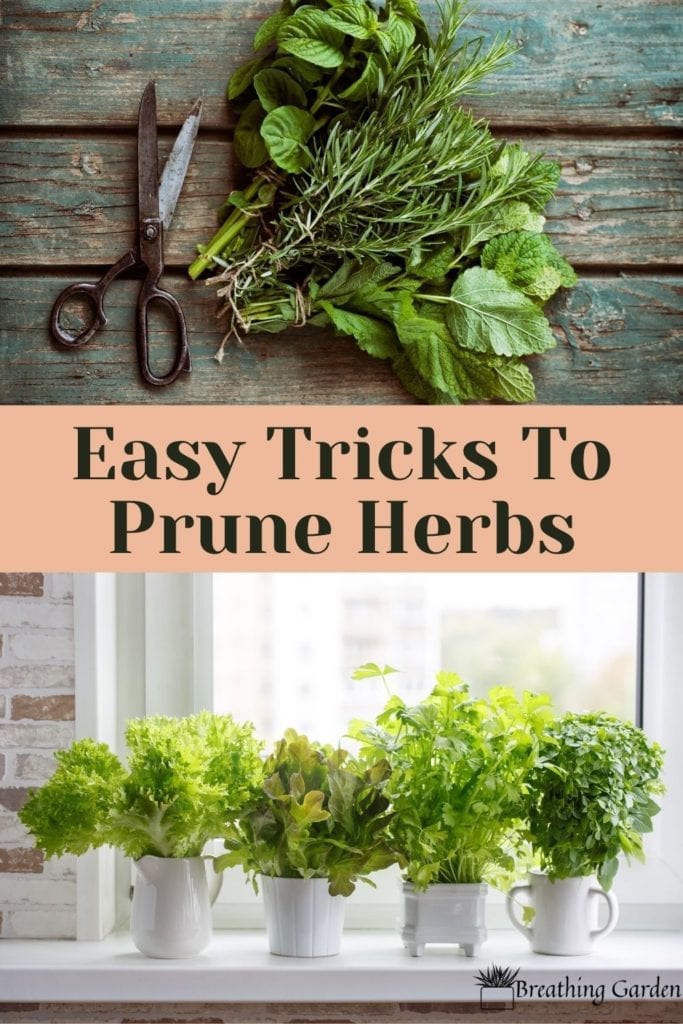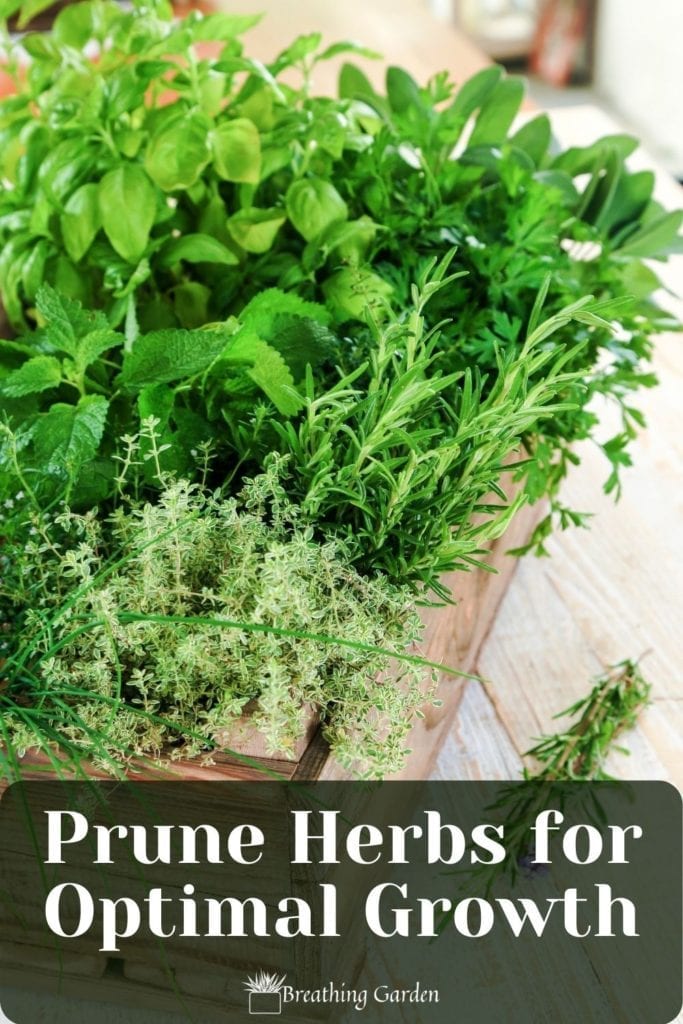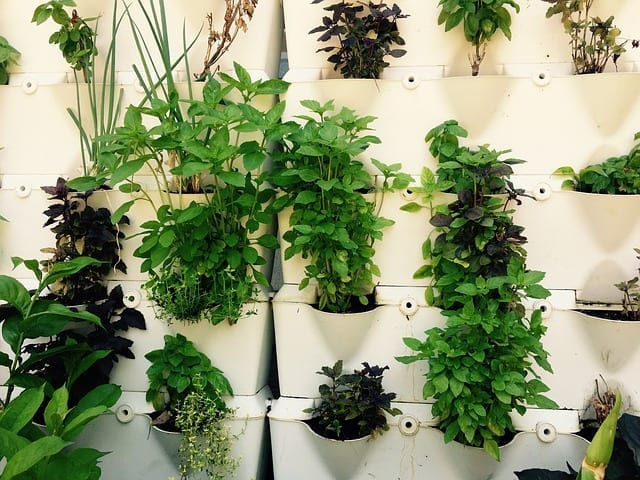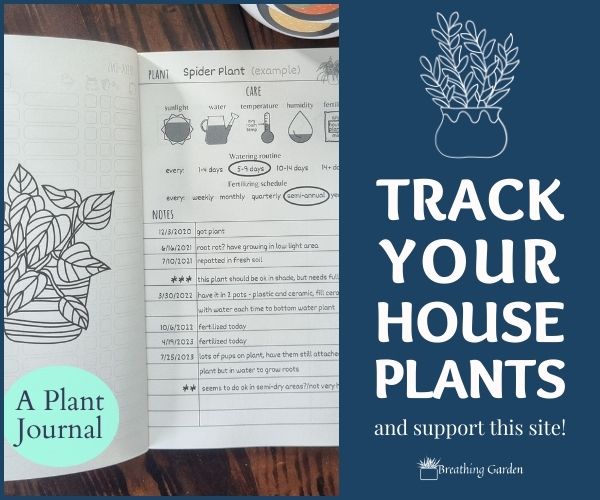Whether you’re wanting to prune basil for some fresh pesto, or pruning lavender for the end of the season, it’s good to know how to prune herbs! There are many different reasons why you might want trim your plants down.
*This post may include affiliate links. When you purchase items from these links, we will receive a small commission, at no extra cost to you, to help support this website. Thank you for your support! Read more ->
This article will go over how to prune herbs whether just to use a few leaves in a recipe, to cut back if it’s gone wild, or to cut it back in the winter! Also find how to prune different kinds of herbs, and some ideas on what to do with the leaves!
Fun fact: pruned herbs will grow back fuller than before. Otherwise they’ll be tall and lanky with few leaves!

Can All Herbs Be Pruned the Same?
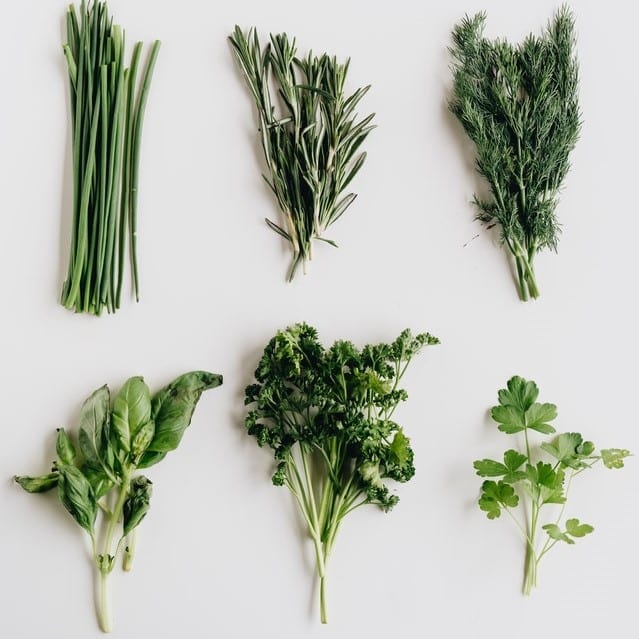
Not every herb can be pruned the same way. But many of them need the same treatment! Keep reading for the basics and then scroll further down for more specifics depending on the type of plant!
Pruning Herbs for Cooking
This is a common reason to prune herbs, just taking some leaves off! Get your fresh basil leaves ready for the recipe, without causing the plant too much harm or just picking off a few leaves.
Why You Don’t Want To Pick Leaves Off
It might seem easier to just pick a few basil leaves off your plant to throw in a recipe, but you don’t want to do this! If you just pick a leaf off here and there, the plant will grow in height but won’t have many leaves.
Instead, using pruning shears (or secateurs), or really sharp kitchen scissors, cut down onto the stem until you have the desired number of leaves, still leaving at least a few leaves on the stem before the roots, until you have the desired number of leaves. Or go around on multiple stems cutting the tops off. You might get some small leaves too with trimming this way, but that’s okay! (This is slightly different for plants like parsley – read about it towards the bottom!)
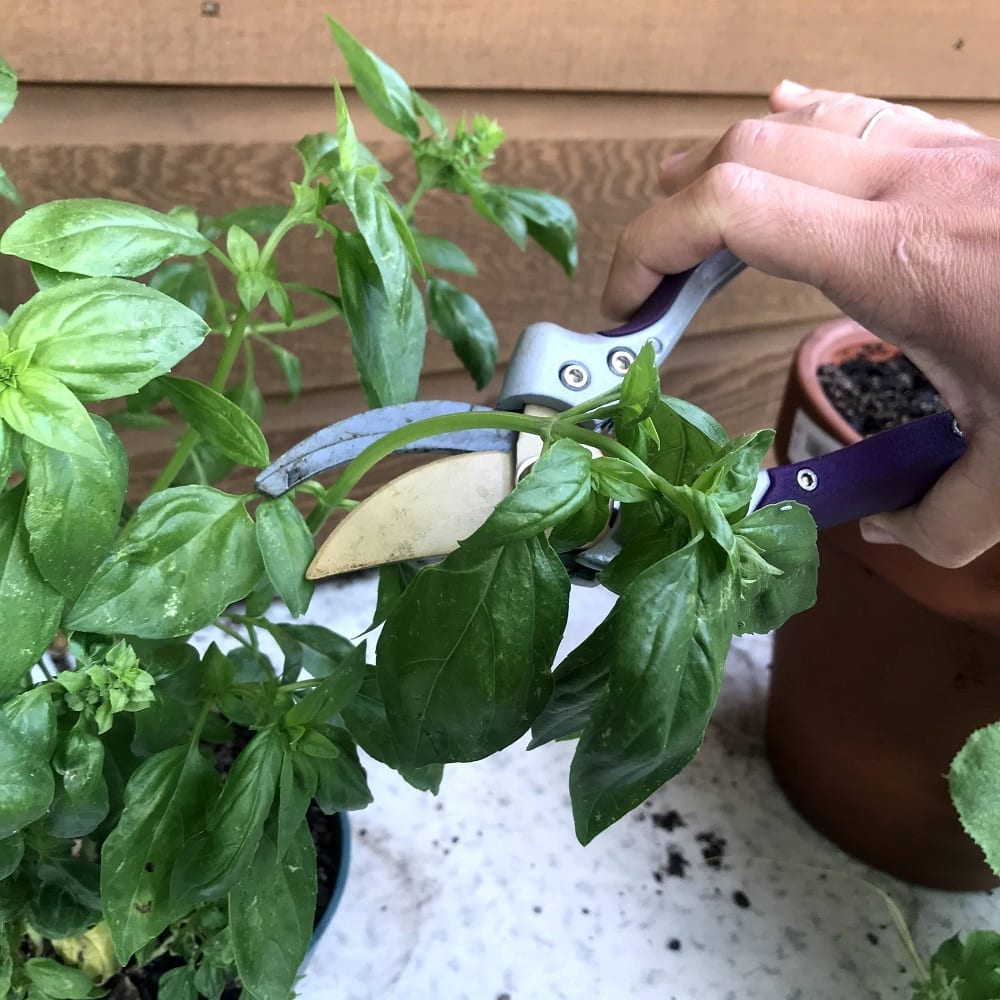
Make the cut right above the next set of leaves, so that there isn’t a lengthy piece of stem with no leaves on it.
What happens is that where the plant has been cut will now have the opportunity to grow in 2 directions. So it will make it a much fuller plant, and you’ll be able to harvest more leaves more often without causing problems to the plant!
Pruning Herbs for Size Control
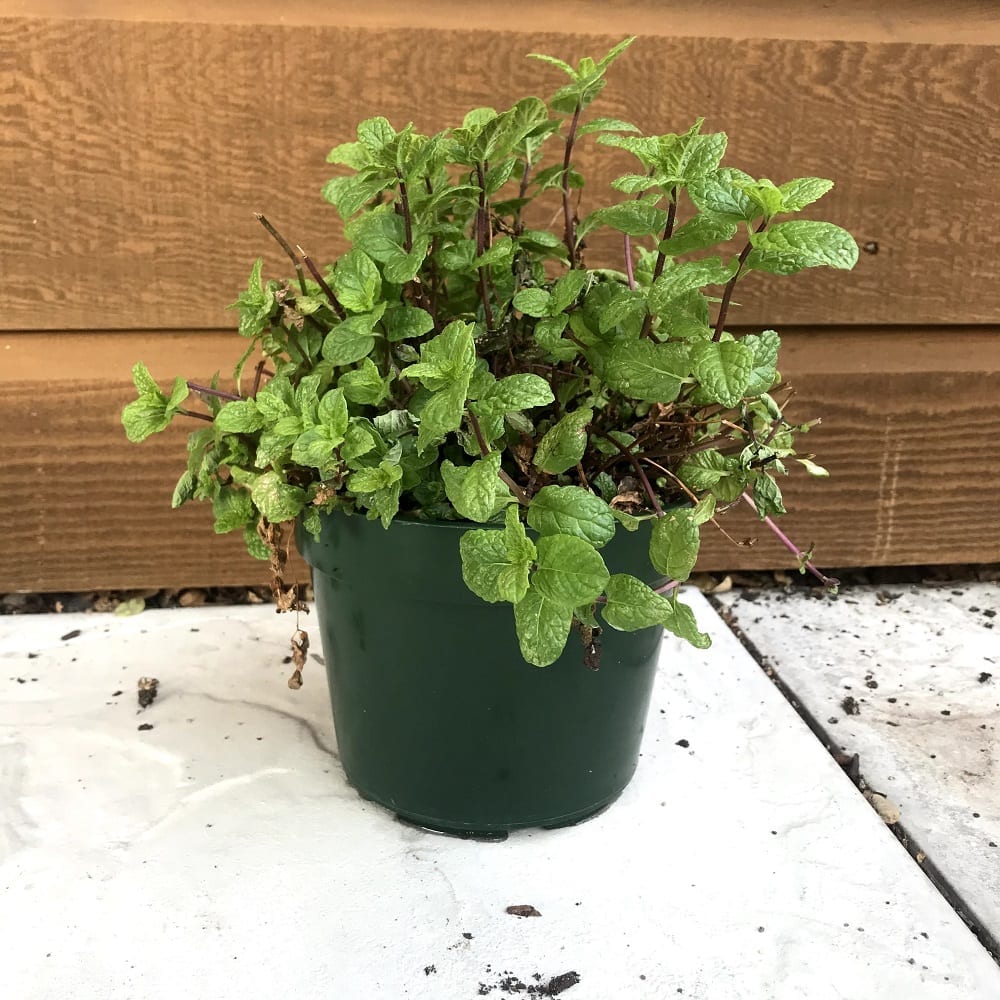
Some herbs grow out of control (*cough* mint). Where they want to dominate the entire garden or cover every surface. One non-pruning way to keep these plants in line is to grow them in containers rather than in the garden. So they can’t spread as far.
But these plants can still become giant in the pots and need a good trim!
In this case, follow the same idea as above where you cut right above leaves so there isn’t a lengthy piece of stem, but cut much further back and more of the stems. Keep some leaves on so they can still have a way to photosynthesize, but you can cut them all down to even 3 inches tall (when they might have been 20 inches).
Read at the bottom ideas on what to do with all of the herbs you’ve trimmed!
Pruning Herbs During Winter
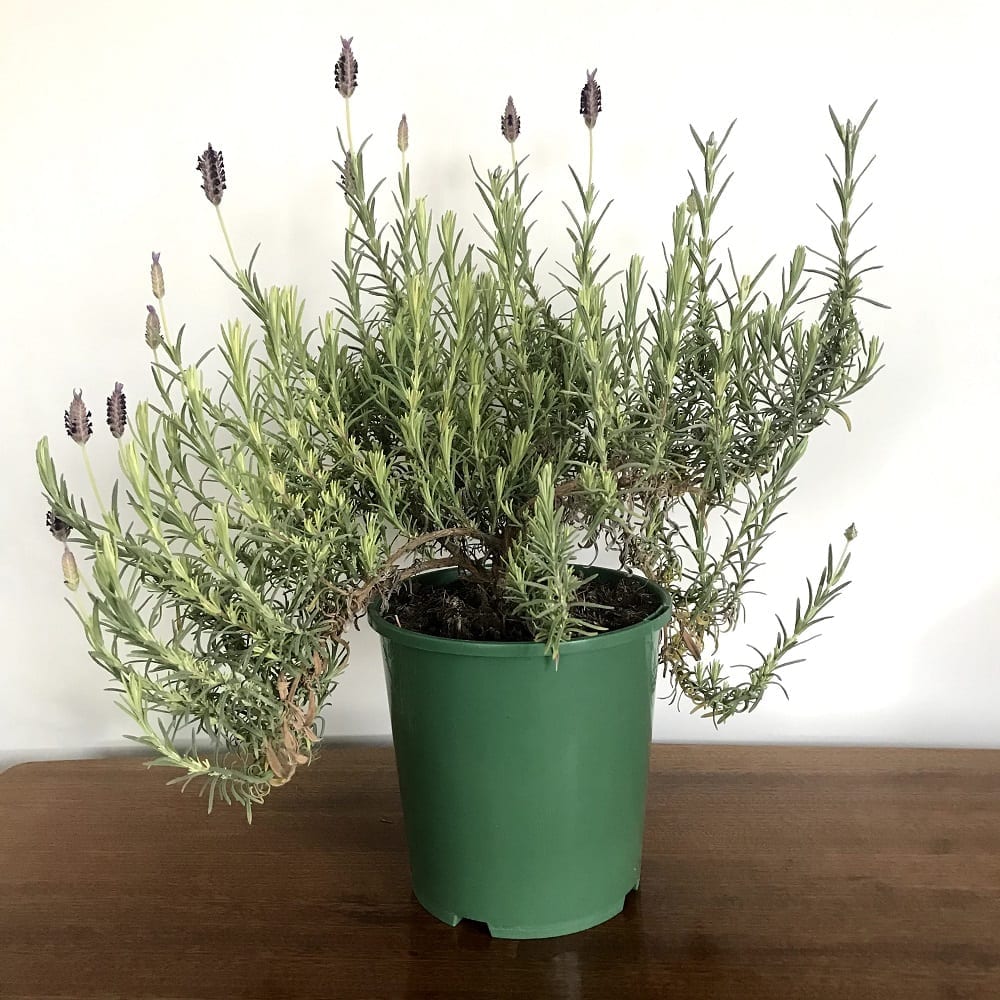
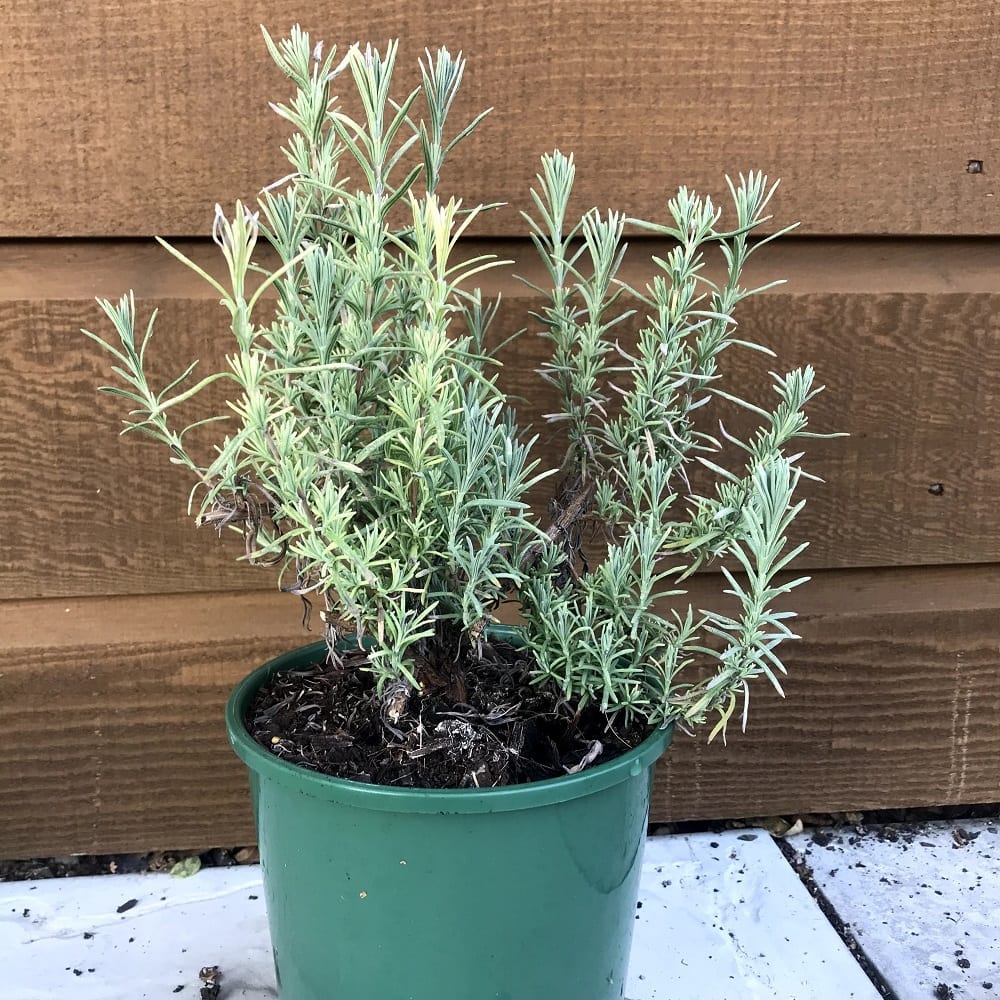
If you choose to keep the plants outside in the winter (or if they’re in the ground), winter is a good time to trim them back! If you want to keep the leaves since these are herbs, prune before the last frost.
How to prune herbs for winter: when the plants are dormant, or will be getting dormant with colder days, trim back down by 1/3 of their height. When plants are dormant, they aren’t putting energy into growing new leaves, and then in spring they will be able to grow back fuller!
If you want fresh herbs year-long, grow your herbs in pots so they can be brought in during the winter!
Plant Differences In Pruning
Not all herbs have the same requirements, but some grow similarly and can be taken care of the same way!
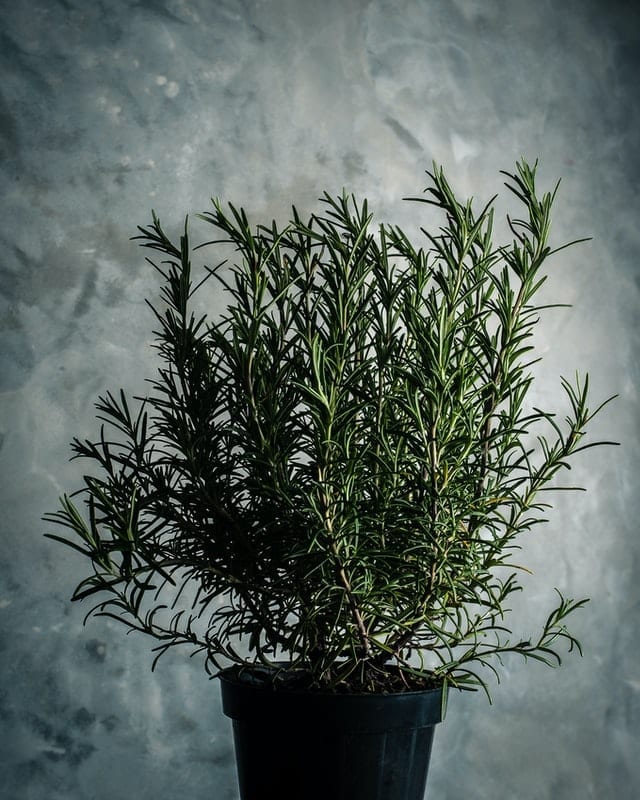
Herbs like lavender and rosemary have more woody stems at the base and can grow into almost bushes. With these, cut the top third of the plant off. If you cut more than that, you risk accidentally killing the plant. The key is to keep at least some leaves showing!
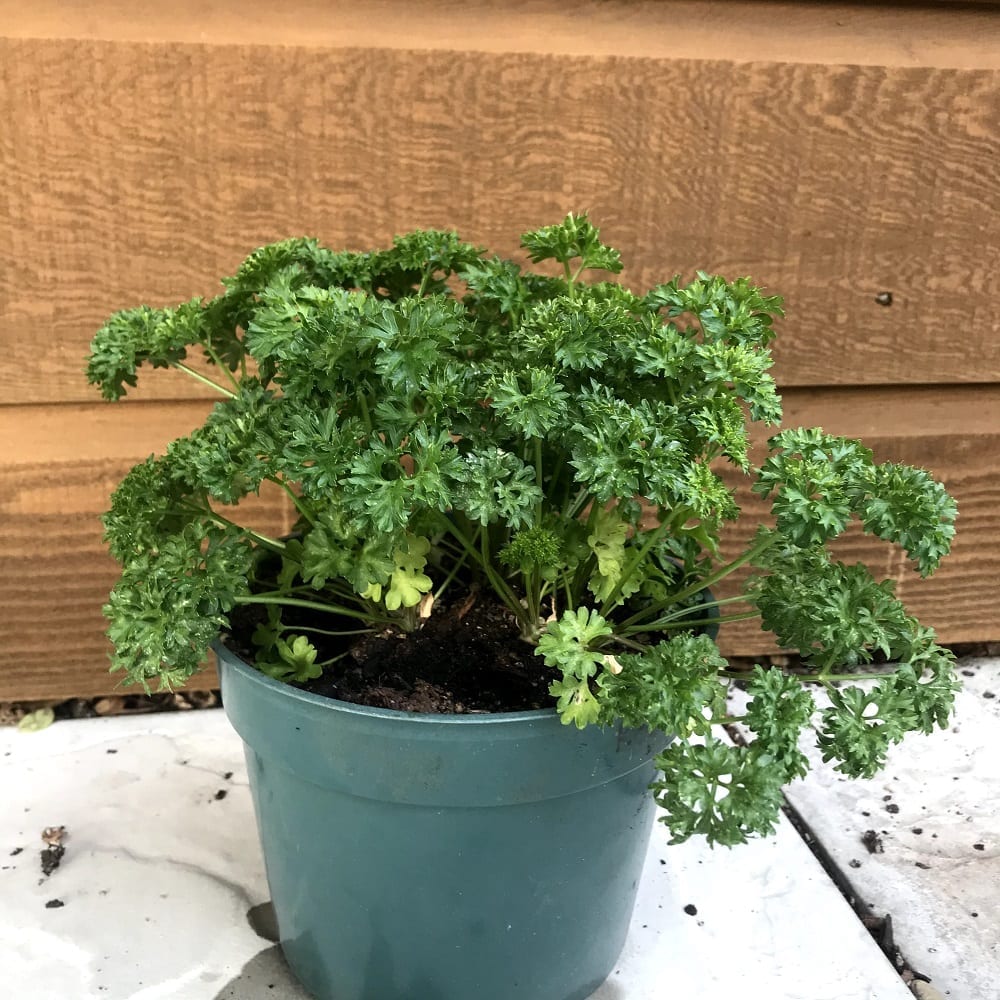
Parsley and cilantro tend to have long stems and then the leaves are just on the top. If you take only the top leaves off, the plant won’t really be able to produce more leaves and will have this lengthy stem! For these herbs, prune down to almost the bottom, where the stem meets the dirt. It will regrow healthier if you trim this way! (Can’t tell the difference between these plants? Here’s a good guide.)
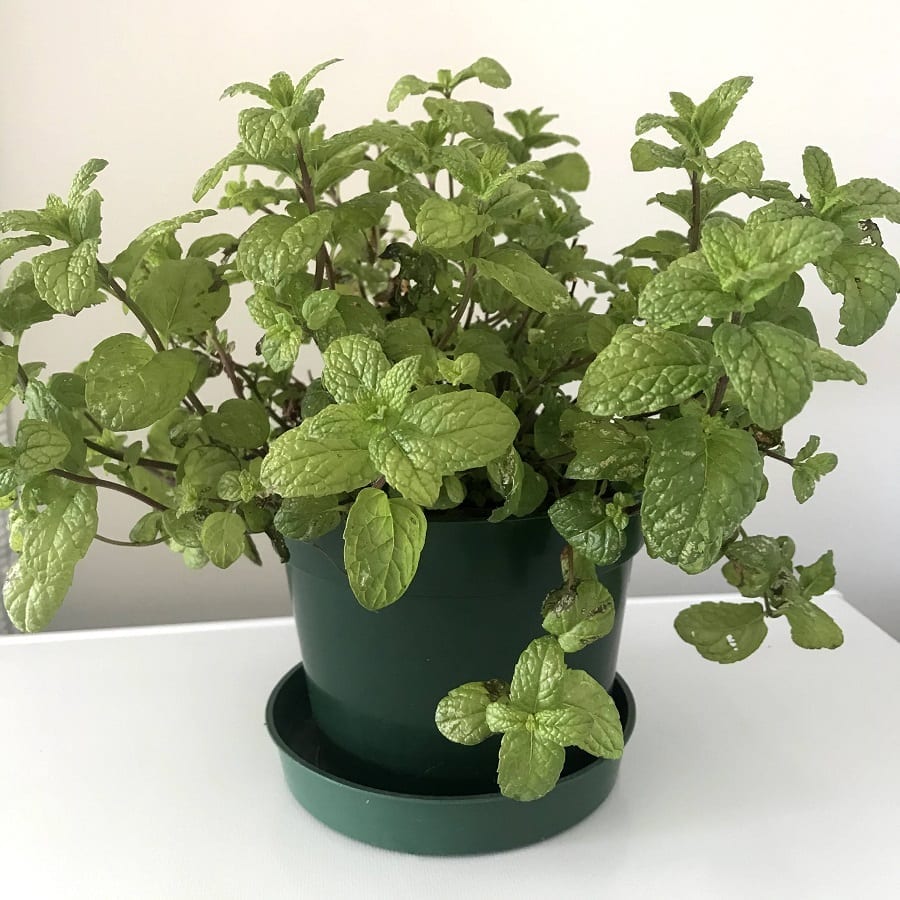
The mint family and other herbs like basil can all be handled about the same! These have leaves all along the stem. They can be cut down pretty far, keeping at least a few leaves on the plant.
The biggest key for how to prune herbs like basil is to cut right above the tops of some leaves so the energy can be focused into those leaves instead of a blank piece of stem where it can’t really grow anywhere.
What To Do With The Herbs
If you’re cutting off more herbs than you need for one meal, use or save them for later!
A great way to use a lot of herbs at once is to make pesto. Pesto is traditionally made out of basil, but there are great recipes for rosemary, mint, or parsley pesto, and then freeze it to keep it for up to a year!
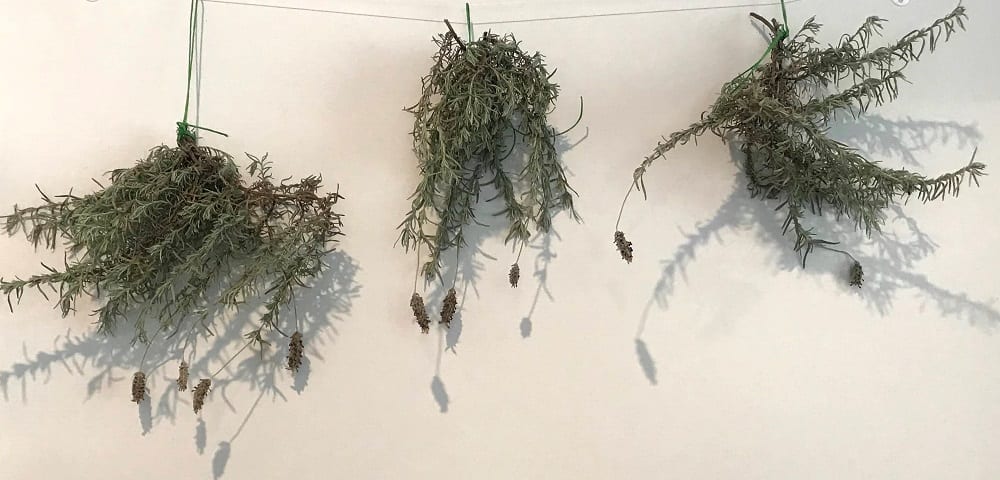
Another great option for extra herbs is to dry them! Depending on how wet the leaves are (just based on plant type), either dry them by hanging them upside down in a low-moisture room, or dry in the oven/dehydrator! Then you can make tea out of them too!
If you’d like to keep them “fresh” (i.e. not dried), freeze them! Use an ice cube tray, put a few leaves in each cube spot and fill with olive oil or water.
These are the easy ways for how to prune herbs! Remember that not all plants are the same, but many are similar!
Pin It!
Want to keep these plant ideas for later? Save them to Pinterest!
